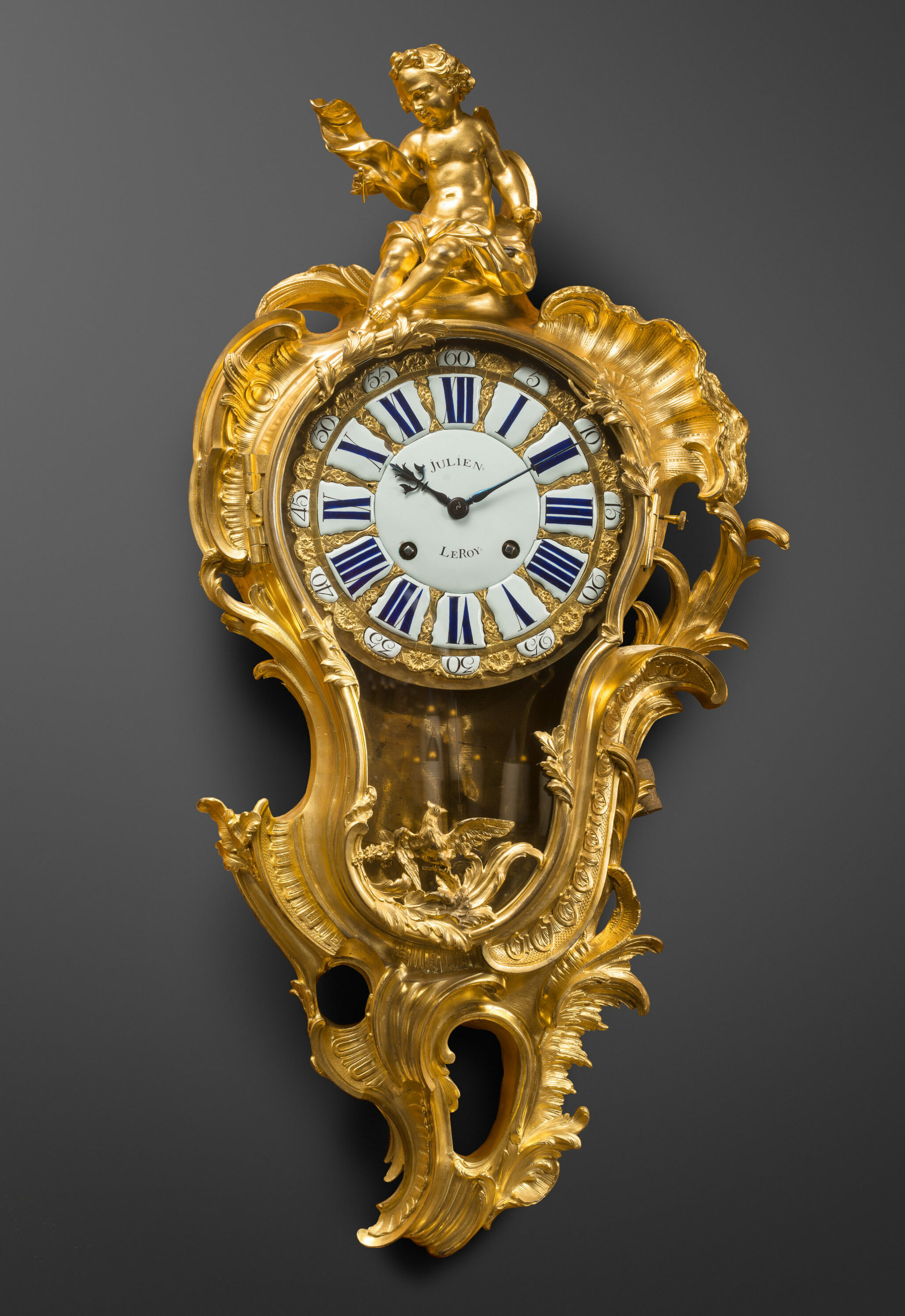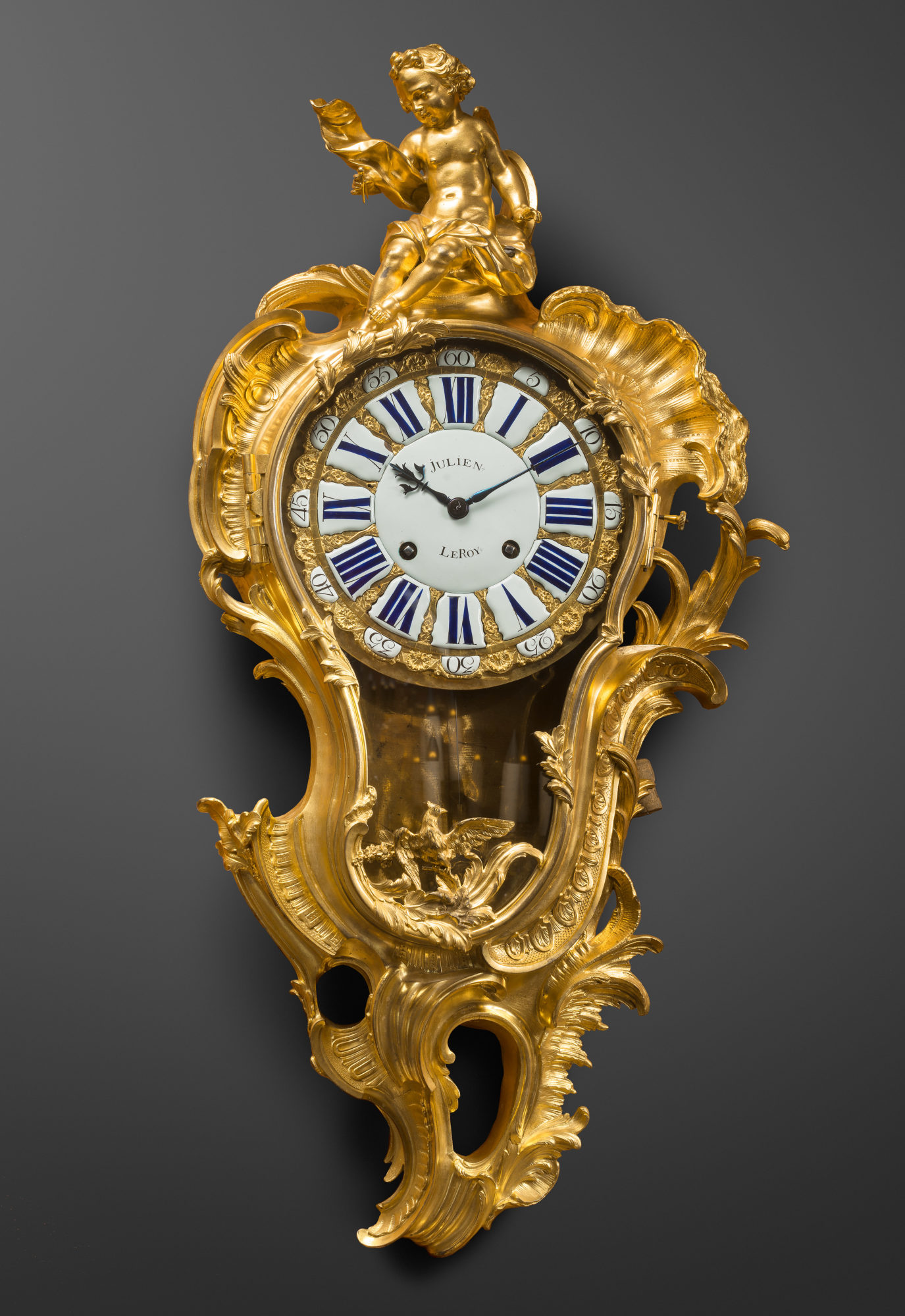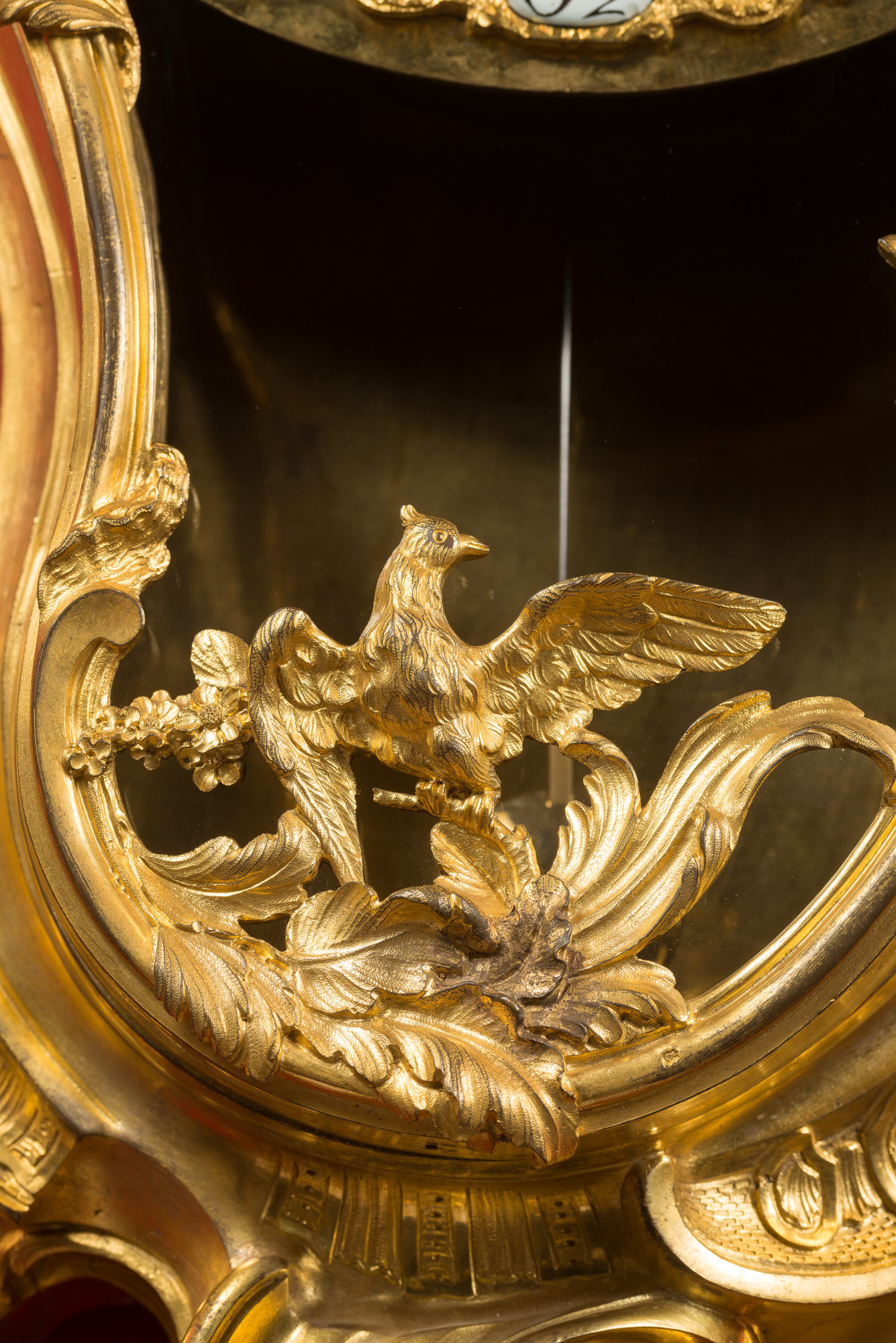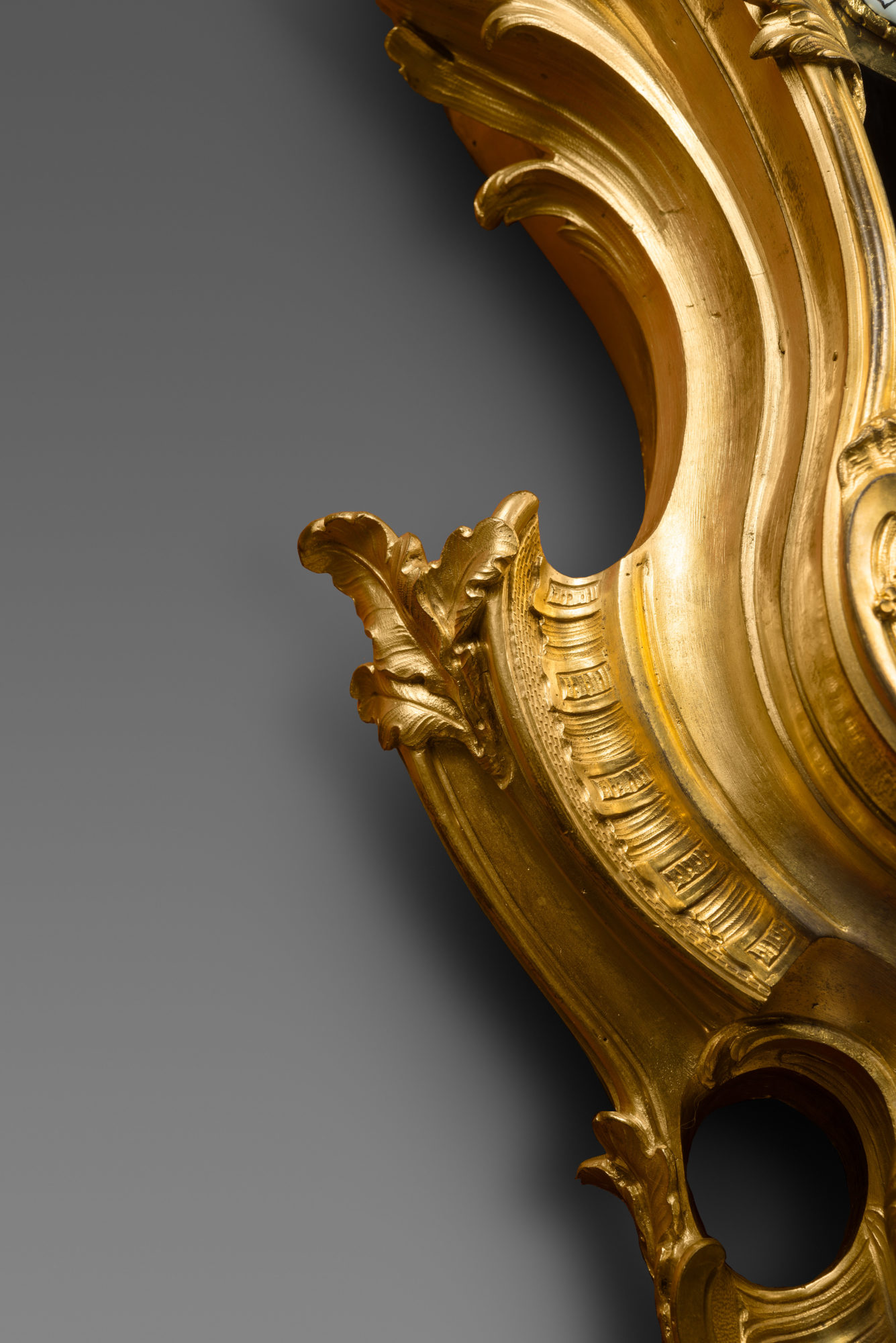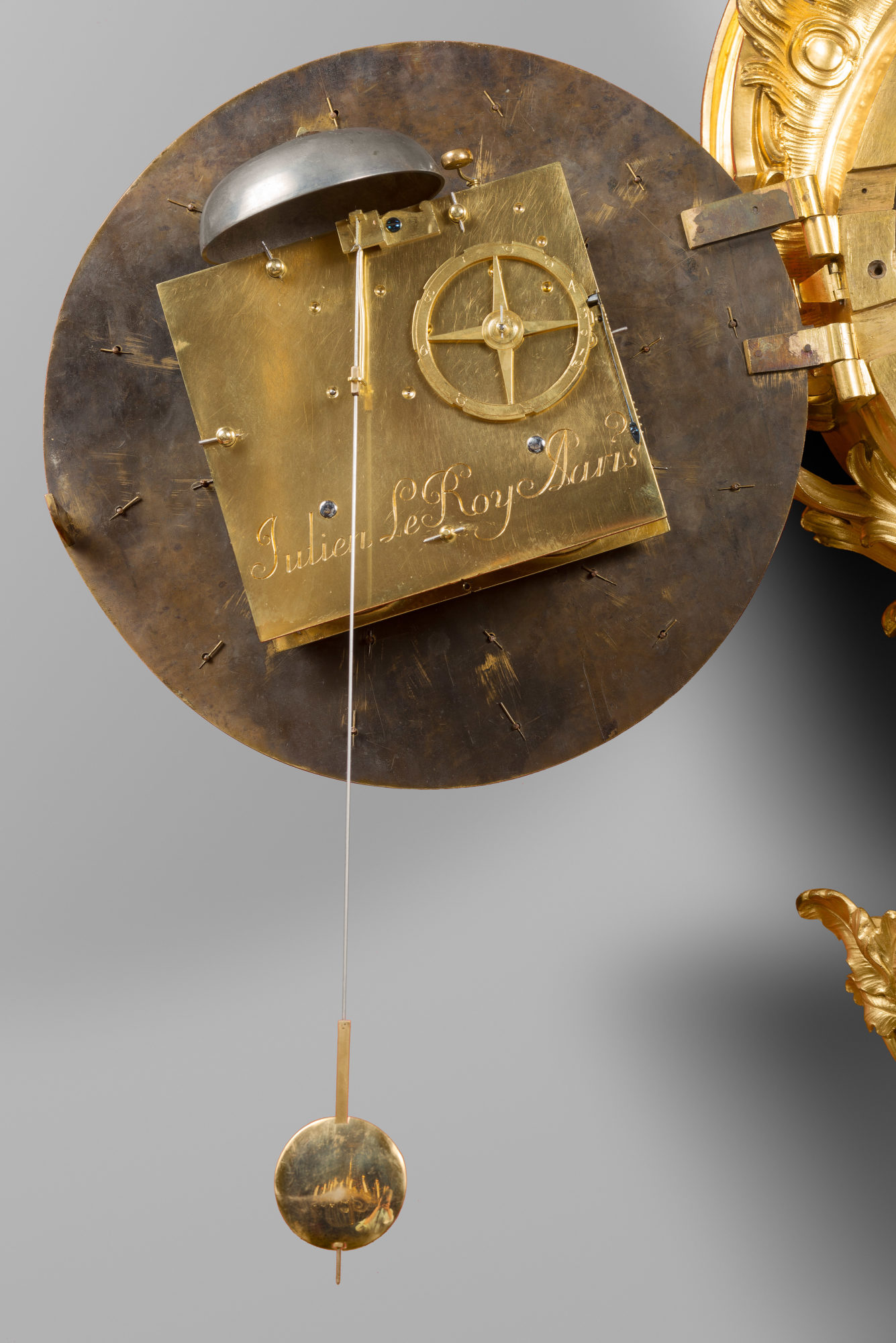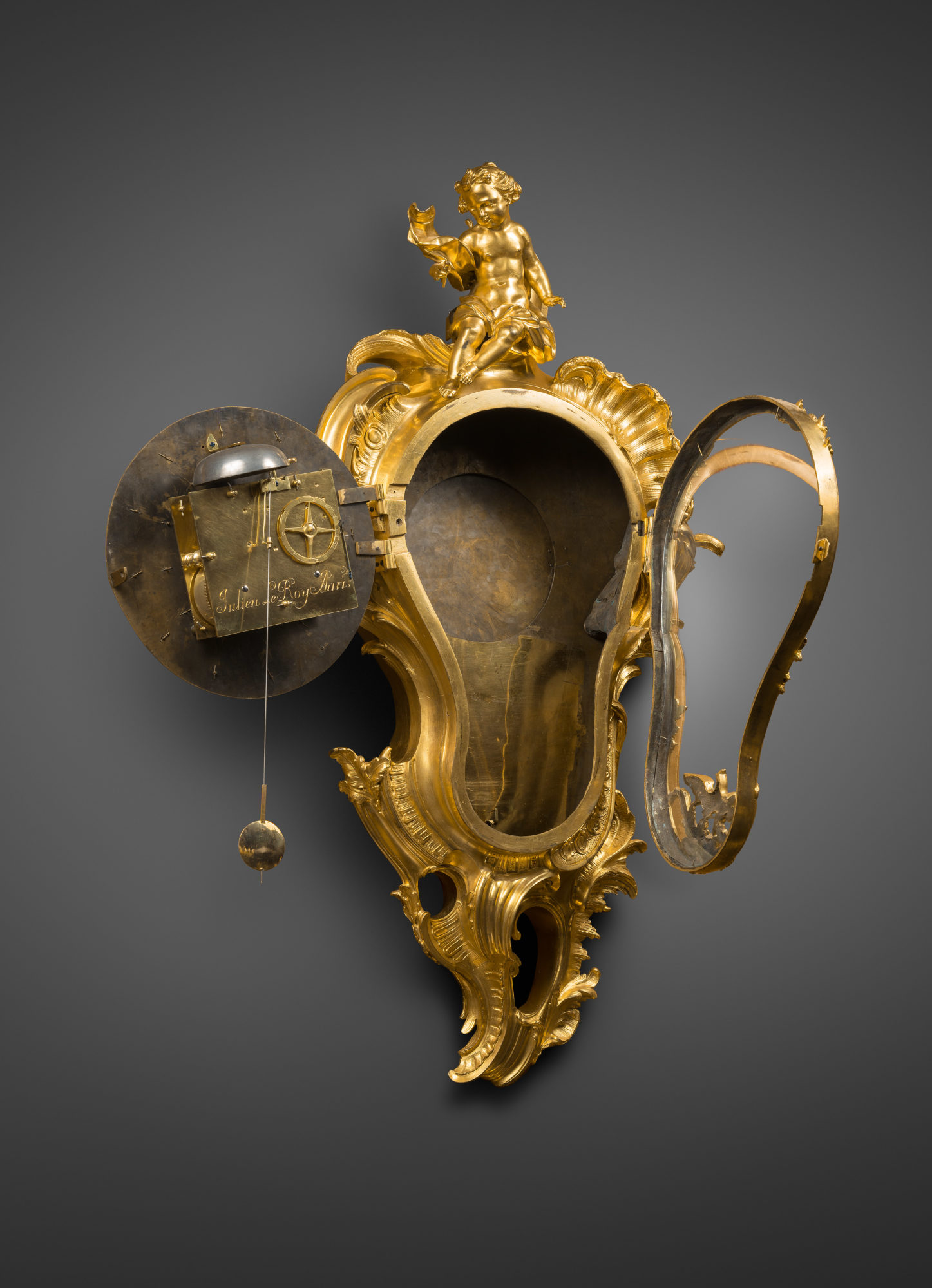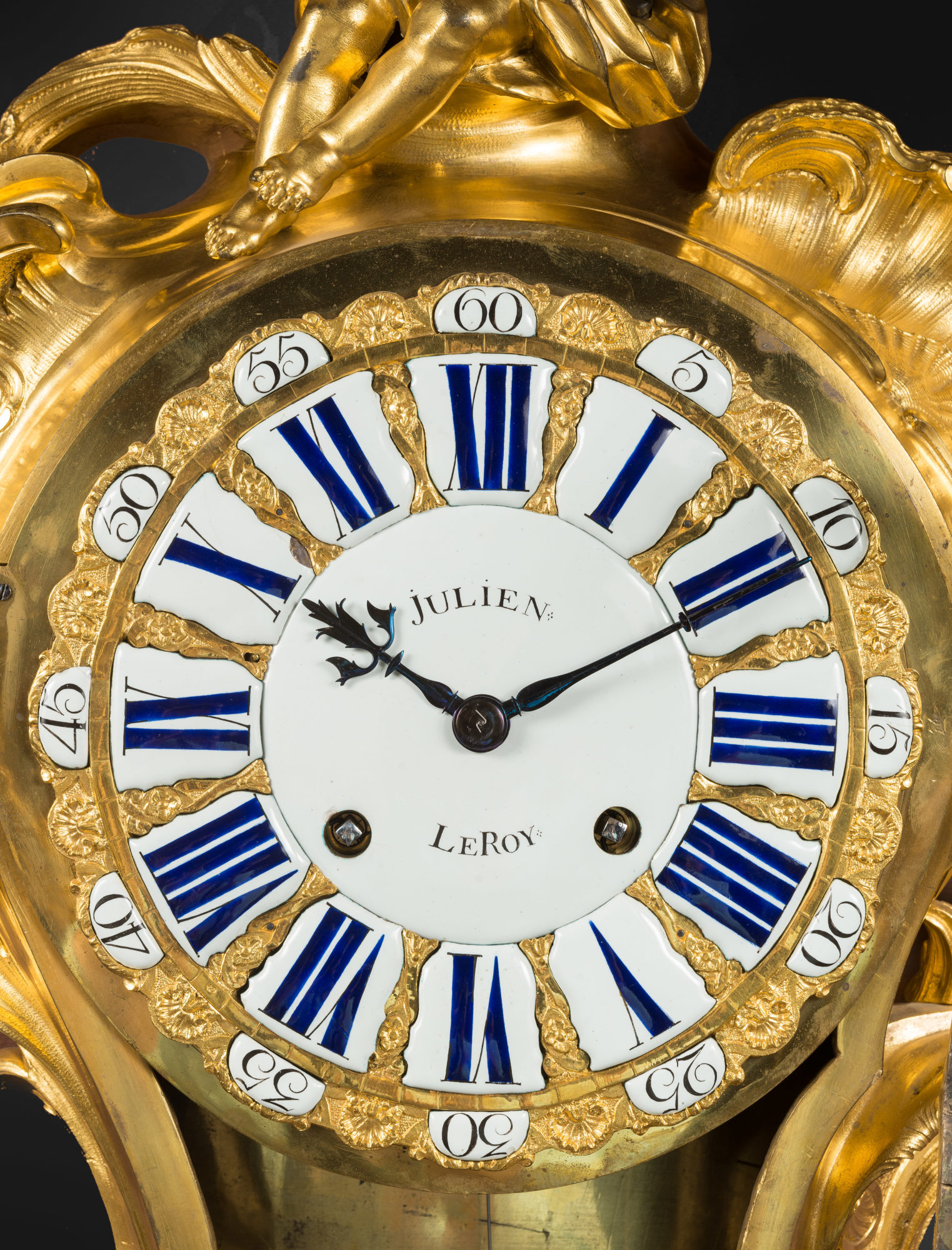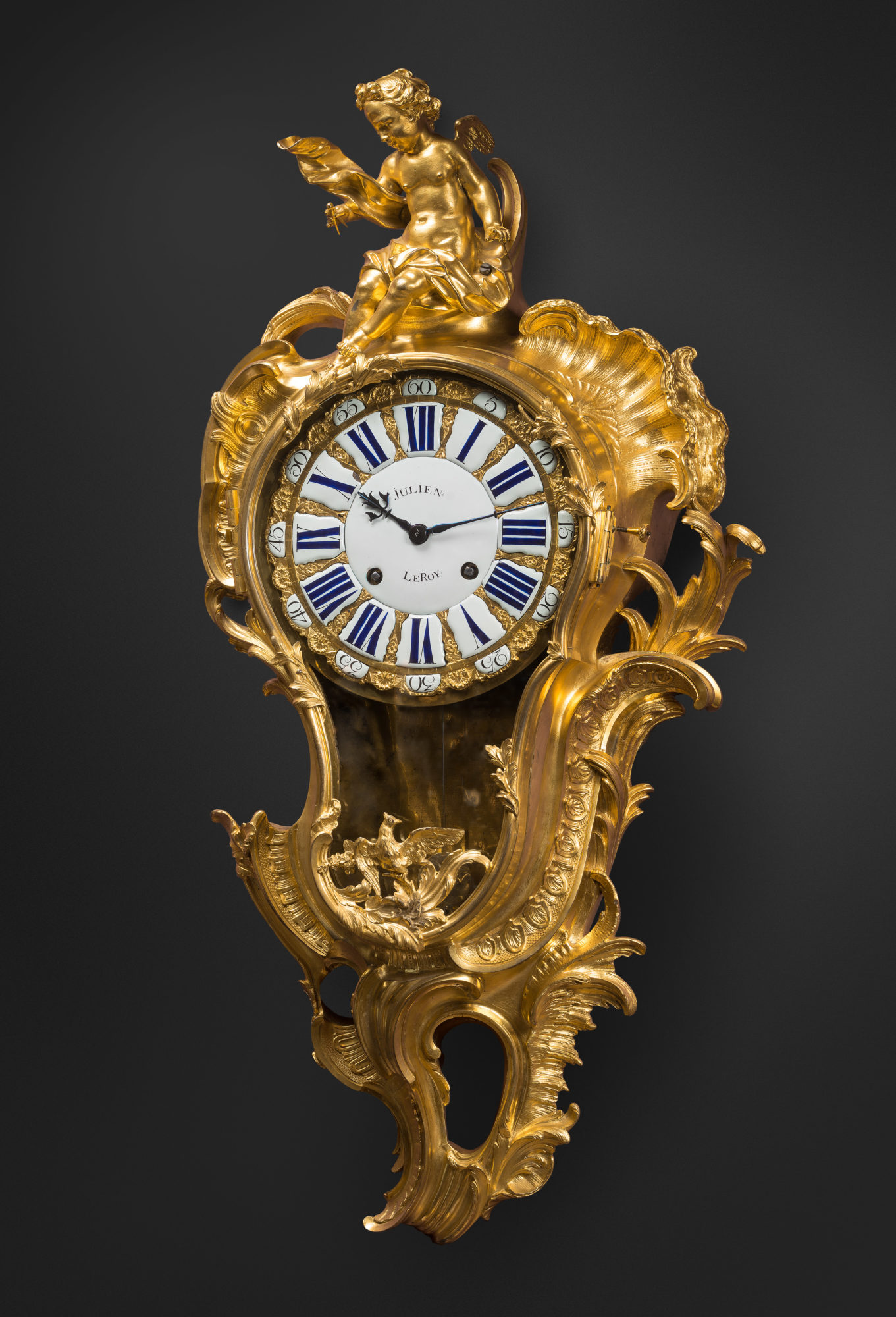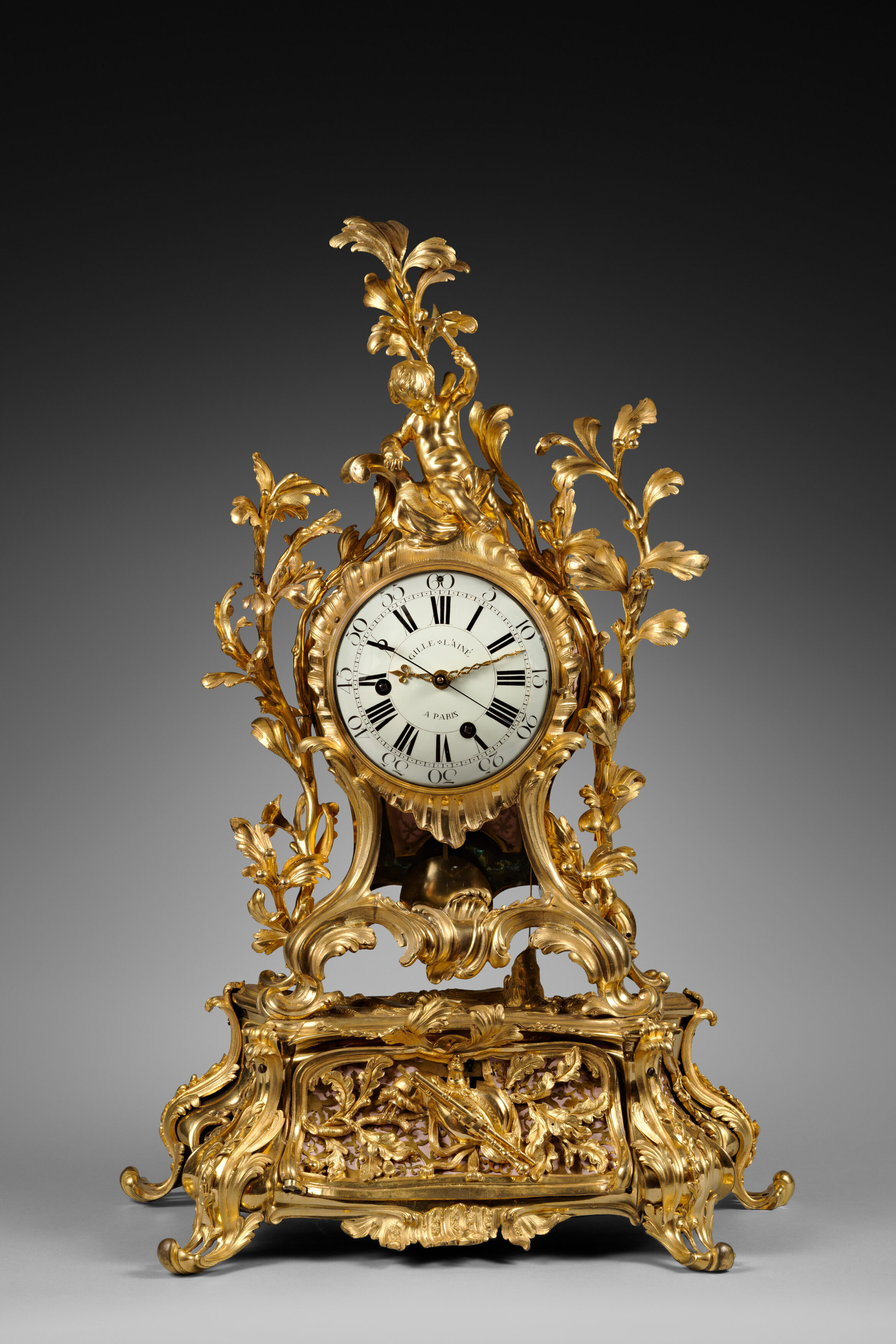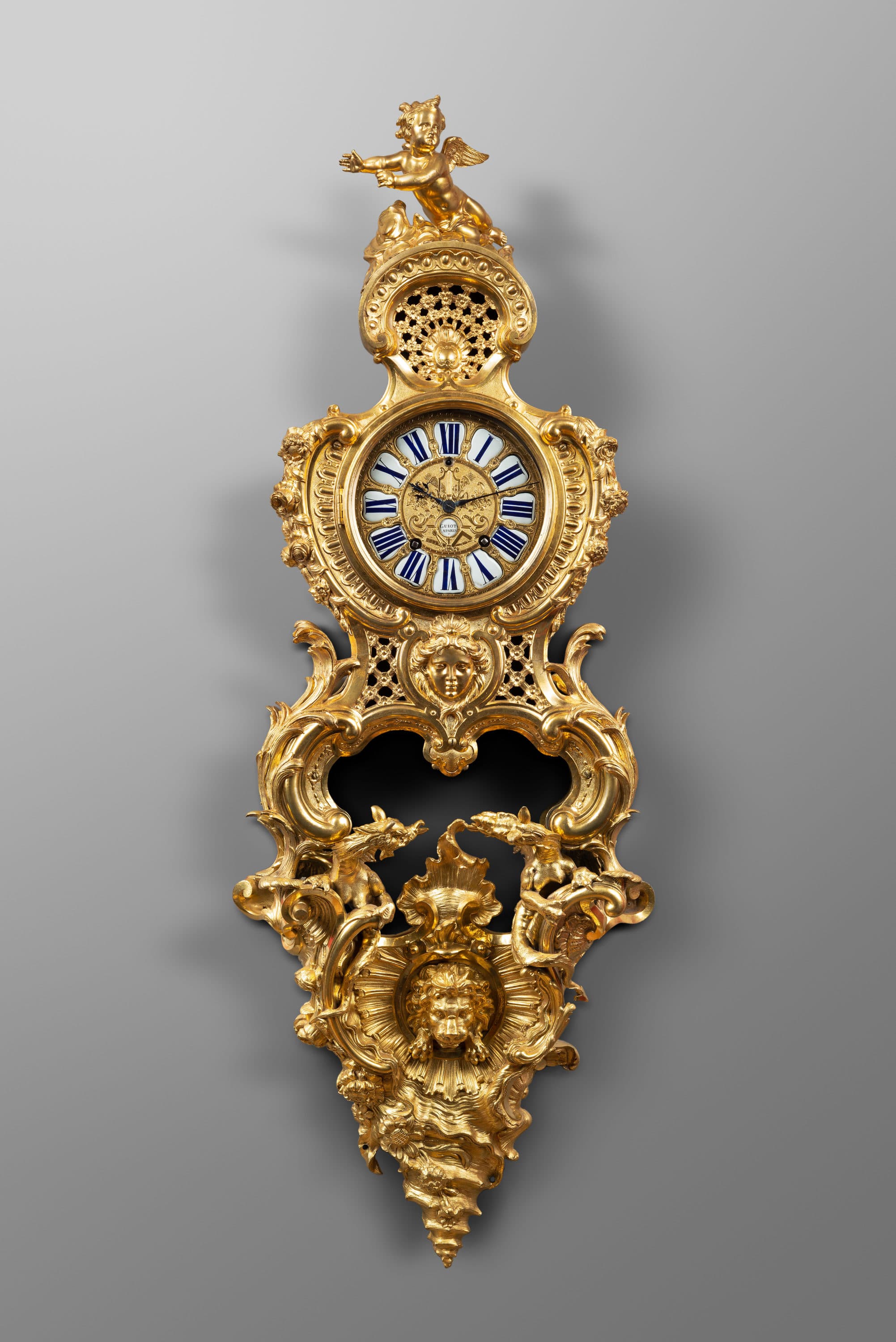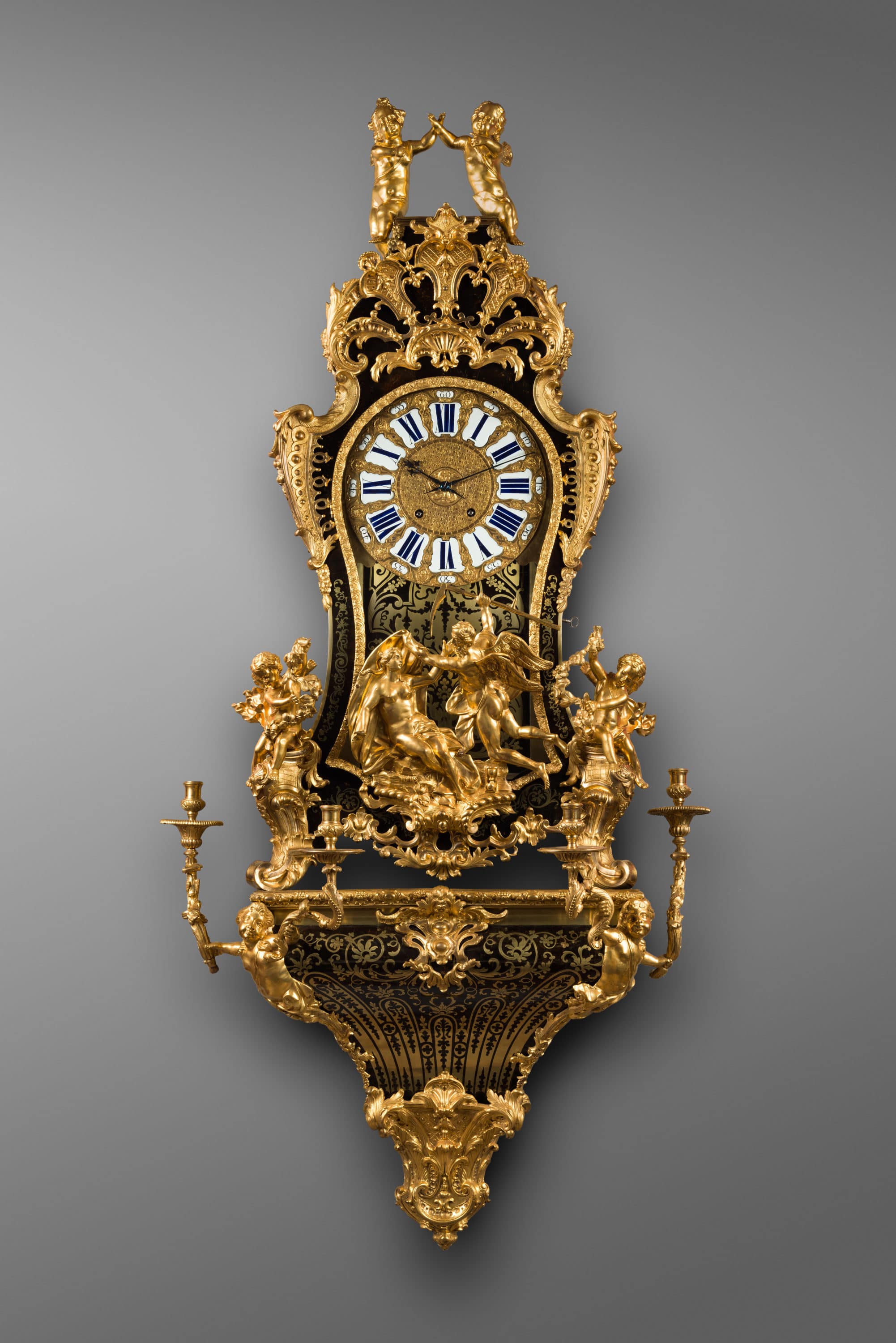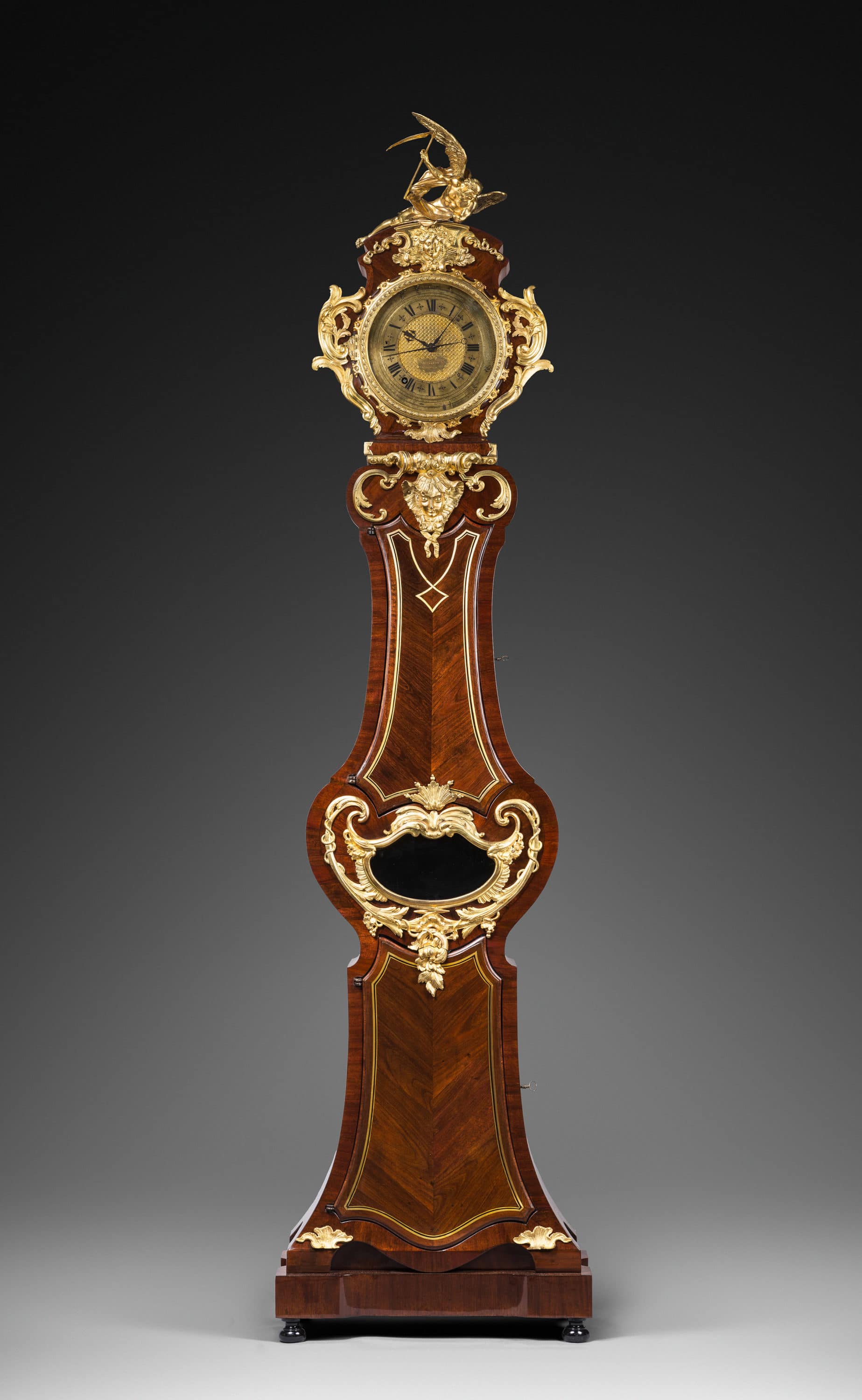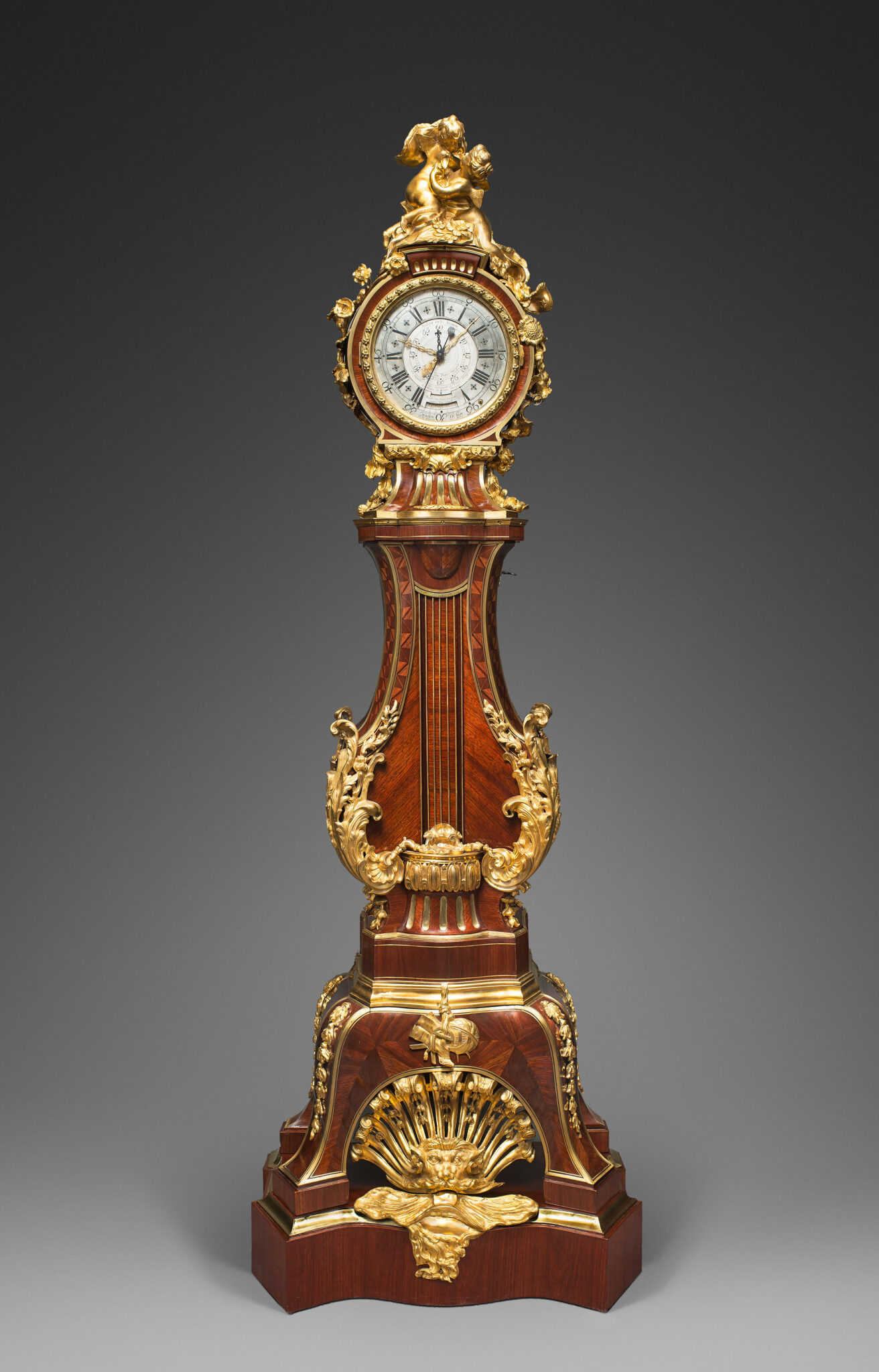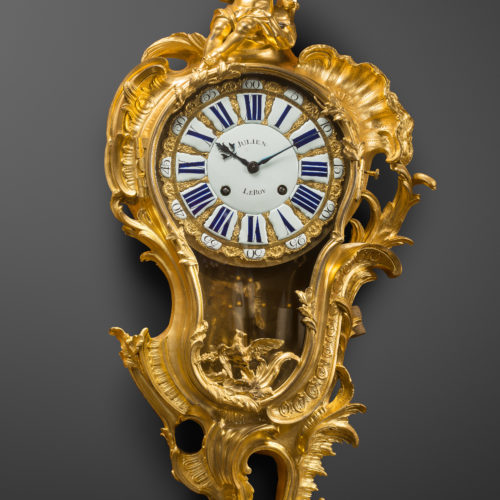Important Gilt Bronze Cartel Clock
“Allegory of Geometry”
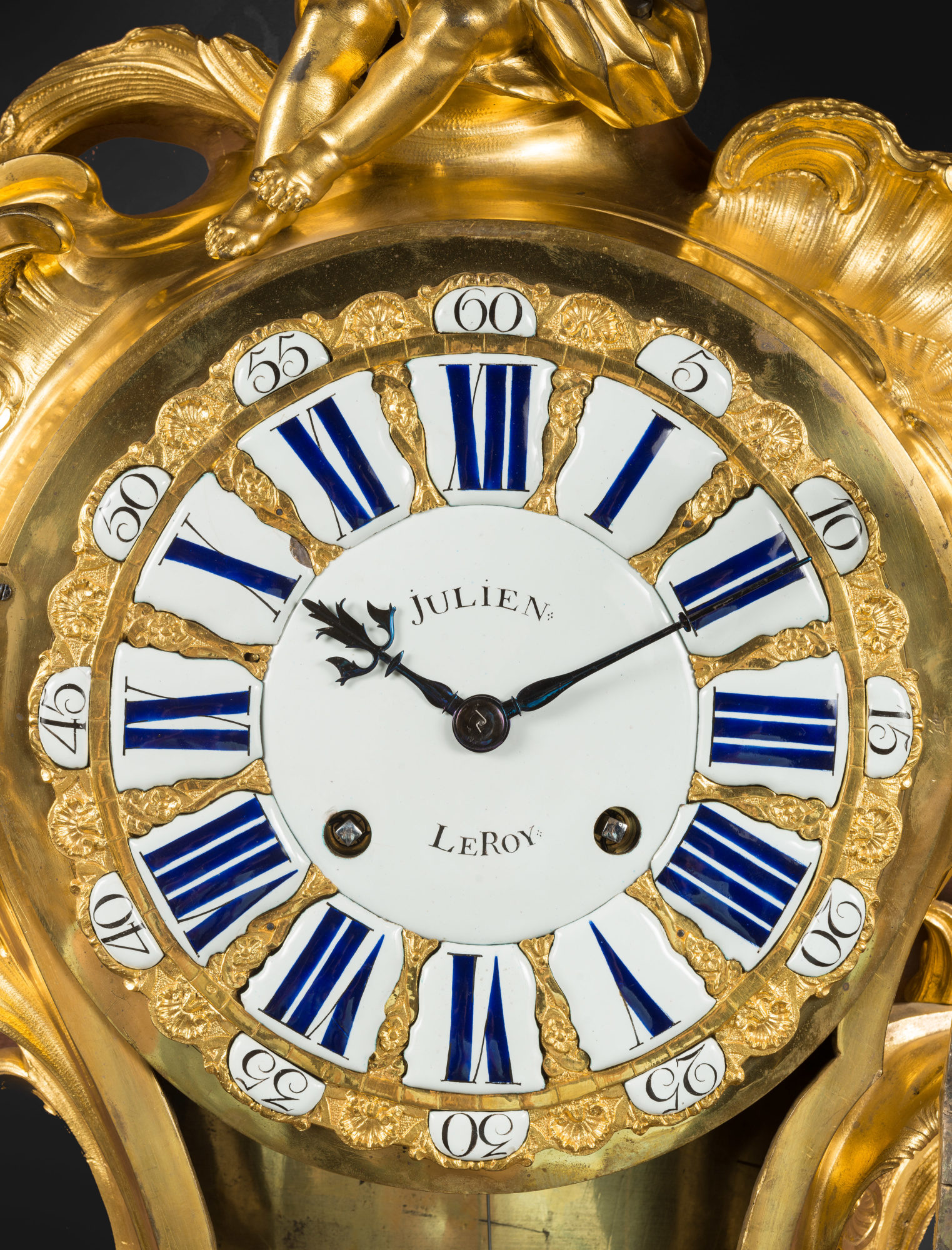
Case attributed to Jacques Caffieri
Paris, Louis XV period, circa 1745-1749
Provenance:
The Abdy Collection, England. Sold Palais Galliera, Paris, 27th March 1965, lot 45. Purchased by a private Parisian collector.
A very important and rare Louis XV gilt bronze cartel clock by the eminent horologer Julien Le Roy. The magnificent case, almost certainly by Jacques Caffieri, is stamped with the C-couronné. The central white enamel dial plaque is signed Julien Le Roy, as is the movement. The foliate-cast gilt dial set with twelve white enamel cartouches with Roman numerals for the hours and twelve outer enamel cartouches with Arabic numerals for the five-minute intervals, with a fine pair of blued steel hands. The pierced asymmetrical rocaille case decorated overall with floral and foliate scrolls is surmounted by a putto holding a compass, who personifies Geometry. There is a bird with outstretched wings in front of the pendulum aperture.
Discover our entire collection of antique cartel clocks for sale online or at the gallery.
This clock is illustrated in: Tardy, La Pendule Française des Origines à Nos Jours, 1961, vol. I, p. 189, and in Pierre Kjellberg, Encyclopédie de la Pendule Française du Moyen Age au XXe Siècle, 1997, p. 106, pl. B.
This superb clock with a rare and possibly unique case bears witness to the fruitful collaboration between 18th century Parisian clock and case makers. The case is comparable in style and quality to other models created by Jacques Caffieri (1678-1755) who often supplied cases to Julien Le Roy (1686-1759). Among them, a similar cartel, dated 1747, is decorated with the figures of Minerva and Cupid; it is now in the J. Paul Getty Museum in California. The present cartel dates from the same period, since it is stamped with a C-couronné poinçon (proof of a tax payment imposed between March 1745 and February 1749). Another similar case by Caffieri surmounted by a Cupid was formerly in the Keck Collection at La Lanterne Bel Air (sold in New York December 1991); another, also surmounted by a putto, was sold in Paris in June 1991.
Julien II Le Roy (1686 - 1759)
Born in Tours, he trained under his father Pierre Le Roy; by the age of thirteen had already made his own clock. In 1699 Julien Le Roy went to Paris where he served his apprenticeship under Le Bon. Received as a maître-horloger in 1713, he later became a juré of his guild; he was also juré of the Société des Arts from 1735 to 1737. In 1739 he was made Horloger Ordinaire du Roi to Louis XV. He was given lodgings in the Louvre but did not occupy them, instead giving them to his son Pierre (1717-85) while continuing to operate his own business from rue de Harlay. Le Roy made important innovations, including the improvement of monumental clocks indicating both mean and true time. Le Roy researched equation movements and advanced pull repeat mechanisms. He adopted George Graham’s cylinder, allowing the construction of thinner watches. He chose his clock cases from the finest makers, including the Caffieris, André-Charles Boulle, Jean-Joseph de Saint-Germain, Robert Osmond, Balthazar Lieutaud, Antoine Foullet and others; his dials were often made by Antoine-Nicolas Martinière, Nicolas Jullien and possibly Elie Barbezat. Le Roy significantly raised the standards of Parisian clockmaking. After he befriended British clockmakers Henry Sully and William Blakey, several excellent English and Dutch makers were introduced into Parisian workshops.
Julien Le Roy’s work can be found among the world’s greatest collections including the Musées du Louvre, Cognacq-Jay, Jacquemart-André and the Petit Palais in Paris. Other examples are housed in the Château de Versailles, the Victoria and Albert Museum and Guildhall in London, Waddesdon Manor, Buckinghamshire, the Musée d’Horlogerie in La Chaux-de-Fonds, the Museum der Zeitmessung Bayer, Zurich, the Rijksmuseum in Amsterdam, the Musées Royaux d’Art et d’Histoire in Brussels, the Museum für Kunsthandwerck, Dresden, the National Museum in Stockholm, the Musea Nacional de Arte Antigua, Lisbon, the J. P. Getty Museum in California; the Walters Art Gallery in Baltimore and the Detroit Institute of Art.
